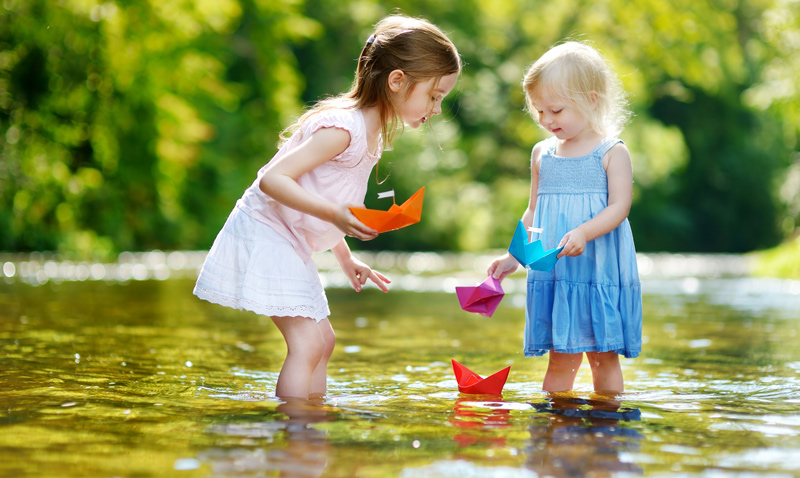COVID-19 and Family Life: Encouraging Resilience In Our Kids
We’re thinking of you, parents! As we continue to share helpful pandemic resources, we’d like to highlight some wisdom from SOIL instructors and Earthaveners on supporting kids to adapt and thrive during the pandemic.
While we are all impacted by the disruption of normalcy during these unusual times, we want to offer some special empathy to the families: It is no small thing for kids to adapt and respond to new rules and limits they may not understand, loss of time with friends, and to contend with confusing and frightening talk about the virus. Likewise, it is no small thing for parents to suddenly lose childcare, adapt to homeschooling, soothe fears, and find ways to balance work responsibilities and self-care with little alone time.
Creating New Ways Forward
Even as the newfound space in our lives gifts us time for reflection, the groundlessness has probably also disrupted what was working well. So much of the consistency in our lives has fallen by the wayside, and with it – for many families – the sense of workability and wellbeing which accompanied it. Consistent and enjoyable day-to-day rhythms and rituals go a long way to support ease and nervous system regulation for everyone, especially children.
To that end, we wanted to first share some thoughts from SOIL instructor Lia Grippo (Reclaiming Nature Connection). Lia is a co-founder of the Academy for Forest Kindergarten Teachers, SOIL’s partner, and of the Wild Roots Forest School. In a letter to Wild Roots families and parents, she offered these gentle suggestions on rhythm. Lia suggests using the basic rhythm of in-breath and out-breath as a metaphoric tool for balancing everyone’s needs for togetherness and space in a given day.
Rhythm in the Lives of Children and Families
There are 3 important considerations to keep in mind that can bring greater ease to our days immediately and to our lives and those of our children long term.
1. Be flexible
2. Set and hold limits
3. Observe the same routine every day (as much as possible, i.e. see #1)
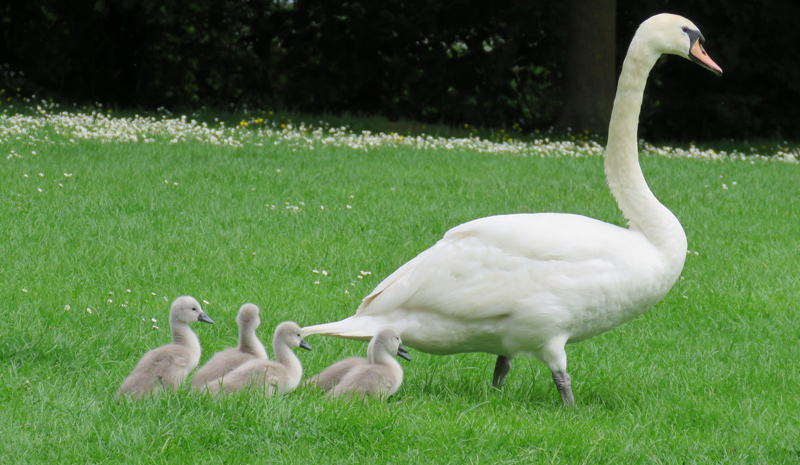
After you’ve been present for a little while, your child can have a breath out and you can do what you have to do. At this point it’s ok to tell your child “please wait because I need to do this.” And this will be alright because you know you have been present
When we talk about “rhythm” for the young child we can look to our own bodies for guidance. We live with a constant rhythm of breathing in and breathing out. We take in and we exhale. Every inhale must be followed by and exhale, which in turn is followed by another inhale and on it goes, seamlessly flowing back and forth. Our breathing does not follow a schedule so much as it follows a pattern and that is what we need to cultivate.
This rhythm is something that you can bring into your home.
Breathing in refers to meals, story time, and times when we are together and acting together in a familiar and predictable pattern. When the children are in the breathing-in period, you have to make sure you are present, so the child feels a sense of “ah, here I feel my parents, they are there for me.”
with the child.
Now, think through your day. Where does the rhythm already exist? Do your children wake at the same time each morning and do you all eat a meal together?
The waking is an out breath, the morning ritual of dressing, grooming, and sharing the first meal is an in breath. Is there a midmorning time where you are able to come together for a short time for some drawing, crafting, games and then a snack? This is an in breath. Then your children are free to play- out breath.
Is it possible to have a story time before your midday meal? Can this be followed by rest? And so on throughout the day, breaking the day into patterns of coming close together and gathering our focus, and then allowing bigger exhaling periods to flow.
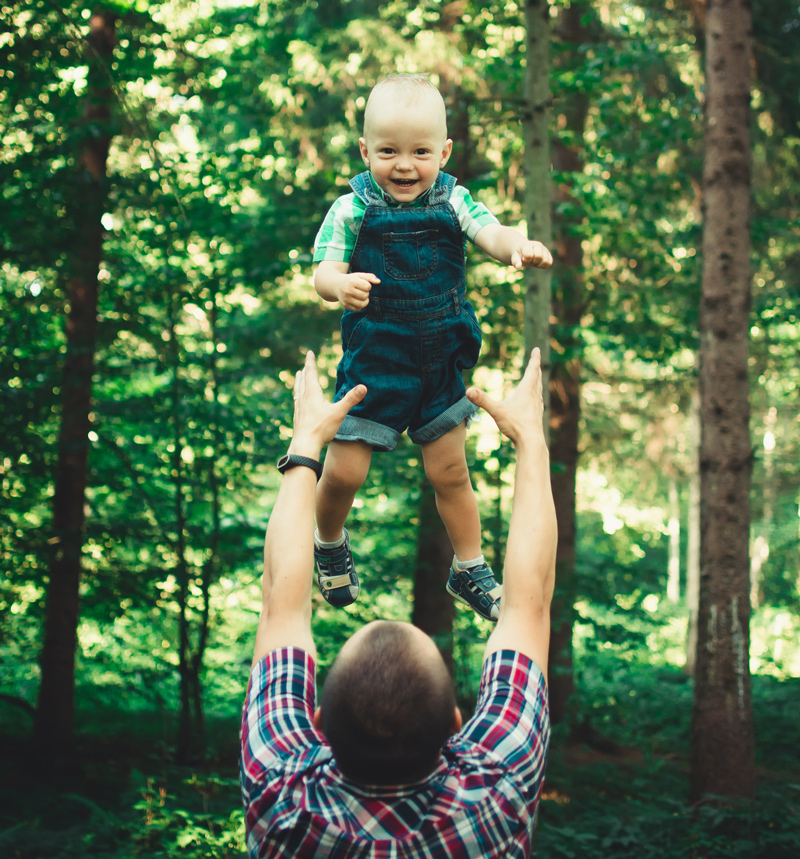
This is simple, yes, but requires that we be present to these touchstones in our day in a way that becomes familiar and reliable.
To strengthen the rhythm, think of how you will begin a meal and end it. Will you say what each is grateful for to begin? Or sing a song, or a blessing? Will you end the meal with a rhyme, another song, the same song? Keep this very simple and as much as possible at the same time each day (likely your children will contribute to this).
To Begin: it might be helpful to mark a piece of paper into thirds and label the sections Morning, Afternoon, and Evening. Think of things that you need/want to include in your daily rhythm and write them in the appropriate area. Order them in a way that makes sense to you and post it where you will see it every day. Include some daily traditions that will be meaningful to your family, like special songs or verses that can be repeated each day. Or maybe the lighting and extinguishing of a candle.
What We Say Matters
How we talk about the pandemic matters, too, when it comes to supporting resilience in our kids. It’s a big ask of our kids to have them understand all the new rules and adjust accordingly. Some of the new terms adults are throwing around may even sound frightening. (Adults too have criticized the term social distancing as being misleading).
Gabriel Vieira, one of our early childhood mentors here at our Earthaven campus and Creative Director of The Village School, has shared this little teaching story about how he and his class found new language for distancing practices that engages their imaginative playfulness. This story takes place in the early days of ‘social distancing’ when school was still in session outdoors. Although we’re all at home now, and our physical distancing has expanded to 8 feet, the spirit of this story is still a helpful reminder for parents and all who are caring for kids at this time.
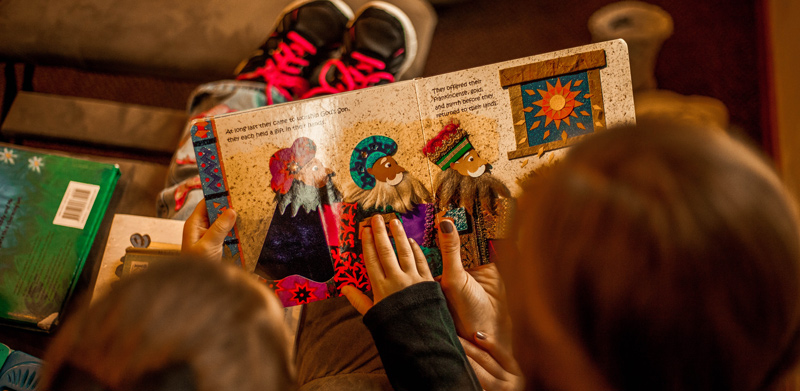
Care Bubbles
“Good morning everybody. Let’s have a little talk about Care Bubbles!”
Social distancing is grown-up speak, technical, dry, even a bit ominous. Care bubbles, on the other hand, are personal, even comforting and fun.
“Imagine all the care and love you have for all the people around you, your friends, your parents, all the other grown ups, the elders, everyone in the village. Feel that care inside your heart, feel it expand and grow out from your heart, until it makes a big bubble that goes all the way out to the end of your outstretched arms. That’s your care bubble.”
At this point, the kids are already on board. This says more about them than it does about care bubbles maybe, but still. All morning long, they practice with their care bubbles, fine tuning how to keep your bubble clear without shoving or being aggressive, helping each other remember, asking good questions. We talked about the level IV protocols, about how Earthaven decisions get made, about who the Weavers are and what it means to be a Weaver. “Wow, that’s a big responsibility” says Zazu. “Sure is,” I reply.
But we didn’t discover the most fun part about care bubbles until halfway through our wildflower walk. The most fun part about care bubbles is, they’re bouncy. Walking down the trail with all your friends becomes a no-touch pinball machine, where everybody bounces off of each other, trees, rocks, stream banks, etc, without getting within three feet. Hilarity ensues.
When we sat down to eat lunch, carefully maintaining our 3 foot care bubbles, we began to perfect the care bubble jive.
What are care bubbles made of?
“Definitely something durable, so you can bounce off of trees and stuff without getting hurt.”
What keeps you from banging against the inside wall?
“It’s soft inside of course, or maybe even filled with water. Yeah, hot water, like a hot tub!” What’s the soft inside like? What kind of material is it?
“Well, it’s fuzzy, but super soft, like jello.”
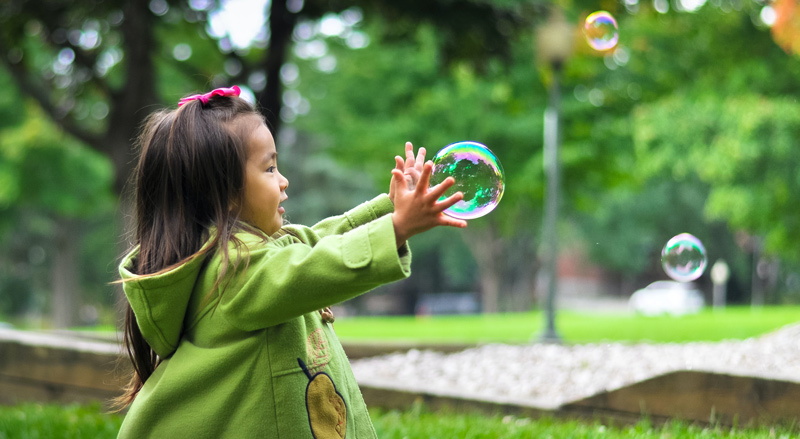
And so on. By the time we’re done, each kid has designed in their mind their own dream care bubble.
Fear and anxiety wreak havoc on our immune systems. Fun is the antidote. Follow these kids’ examples. Forget about social distancing, and hop into a cozy, bouncy, fun-loving care bubble instead!
Yours truly,
Gabriel and the kids
As new rules and safety guidelines are established, we can let this story remind us to be mindful about the impact of the language we give to them. How can we continue to speak to our kids (and ourselves) about the pandemic in a way that helps them understand what’s going on – and how they are expected to adapt – while encouraging their natural and inner resources for adapting to change? Along with supportive rhythm at home, we can encourage playfulness as a powerful form of resilience. The creativity and curiosity with which children naturally approach life can help them greatly to adapt to a new way of life – something we adults can study and learn from them.

Honesty Goes a Long Way
We also wanted to point readers to some thoughts from Dr. Terrie Lewine, one of SOIL’s Compassion Camp co-directors, to support communicating with kids in a way that will help them feel safe and connected, even in a crisis. Among other points, Dr. Terrie suggests that kids who are having a hard time right now may be responding, in large part, to unacknowledged emotions they pick up on in their parents.
She urges us to offer reassurance and soothe fear in our kids, as well as honestly share with them about how we are feeling. It may seem that admitting to children that we’re grieving or afraid will frighten them, but Dr. Terrie reassures us that when our words and our energy match, it sends messages of congruence that actually can help kids feel much safer.
